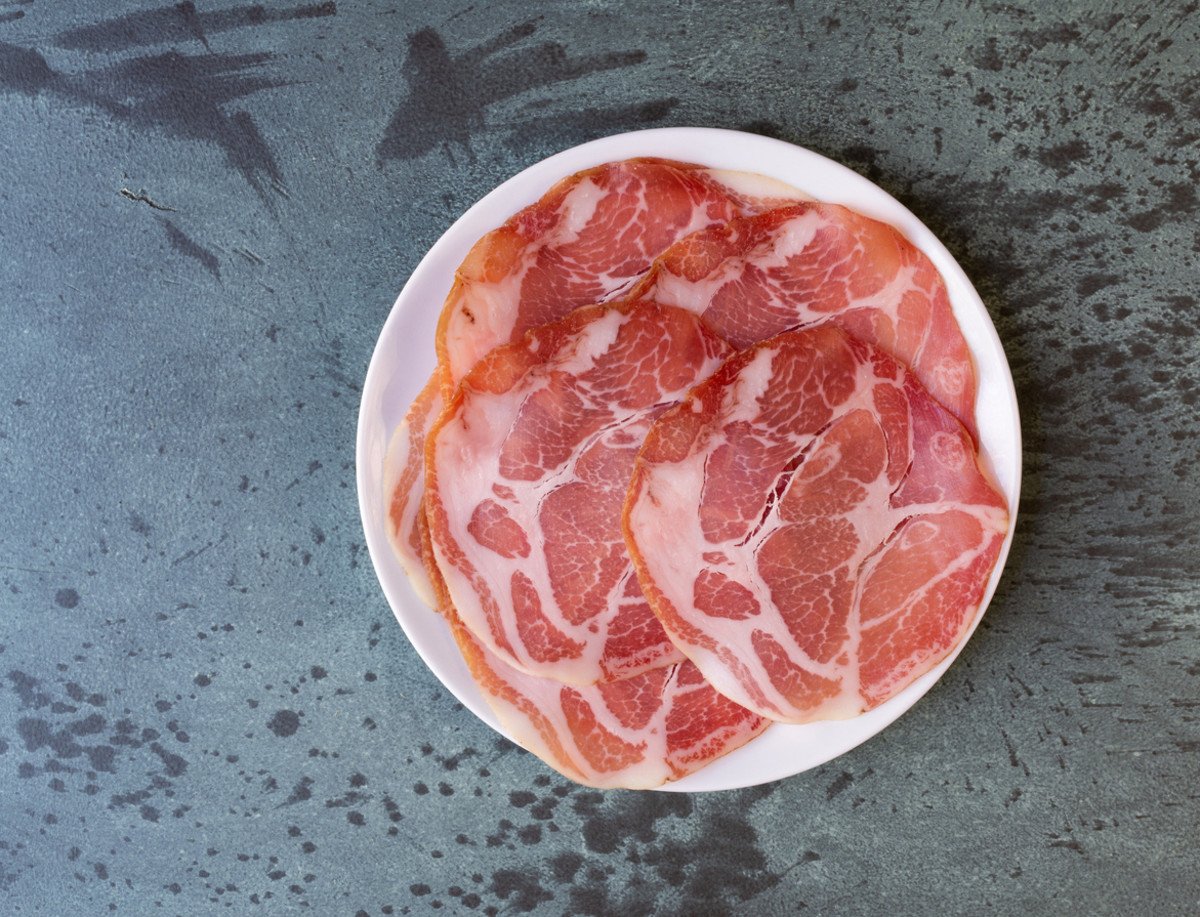If you’ve ever watched The Sopranos or dined at an Italian-American deli, you’ve likely heard of Gabagool. This term, a phonetic Italian-American rendering of “capicola,” refers to a type of cured meat that has become iconic in Italian-American cuisine. Gabagool is a beloved cold cut, known for its rich flavor, tender texture, and perfect balance of spices. Though its roots lie in Italy, Gabagool has taken on a life of its own in the United States, particularly in East Coast communities with strong Italian heritage.
In this article, we’ll explore the history of Gabagool, how it’s made, its cultural significance, and why it’s become such an essential part of Italian-American culinary tradition.
Introduction: What is Gabagool?
Gabagool is the Italian-American pronunciation of “capicola” or “coppa,” a traditional Italian cured meat made from the neck or shoulder of the pig. The meat is dry-cured, seasoned with spices such as black pepper, paprika, and red pepper flakes, and aged to develop a deep, savory flavor. In the United States, Gabagool is often sliced thin and served as part of an antipasto platter, in sandwiches, or on charcuterie boards.
The term Gabagool gained widespread recognition thanks to popular culture, particularly through its frequent mention in HBO’s The Sopranos, where it became synonymous with Italian-American culinary identity. However, beyond its pop culture fame, Gabagool is a delicious and versatile cold cut with deep historical roots.

The History of Gabagool: From Italy to America
The history of Gabagool begins in Italy, where capicola has been a staple of regional cuisine for centuries. Capicola originated in southern Italy, particularly in the regions of Calabria and Campania, where it was traditionally made by curing pork with salt and spices, then hanging it to dry in a cool, controlled environment. The process of curing and aging the meat could take several months, resulting in a flavorful and slightly spicy delicacy.
Italian Roots: Capicola in Italy
In Italy, capicola is known by different names depending on the region. In the north, it is often called “coppa,” while in the south, particularly in Calabria, it is referred to as “capocollo” (which translates to “neck” in Italian, referring to the cut of meat used). The production of capicola varies slightly from region to region, with different spice blends and curing techniques used to create unique flavors.
Italian immigrants brought their traditional recipes for capicola with them to the United States during the late 19th and early 20th centuries. As these immigrants settled in cities like New York, Philadelphia, and Boston, they began to adapt their culinary traditions to their new environment. Over time, the pronunciation of capicola transformed into the now-familiar Gabagool, a reflection of the Italian-American dialect that developed in these communities.
Gabagool in Italian-American Cuisine
As Italian-American communities grew, so did the popularity of Gabagool. It became a common ingredient in Italian delis, restaurants, and homes, beloved for its bold flavor and versatility. For many Italian-A mericans, Gabagool represented a connection to their ancestral roots and a way to preserve the culinary traditions of their homeland.
By the mid-20th century, Gabagool had become a staple of Italian-American cuisine, often served in sandwiches, alongside cheeses, and as part of celebratory meals. It also became a symbol of Italian-American identity, a food that represented family, tradition, and community gatherings.

How Gabagool is Made: The Art of Curing Meat
The process of making Gabagool (or capicola) involves several steps, all of which are essential to developing its signature flavor and texture. While methods may vary slightly depending on the region or the butcher, the basic process remains consistent.
Selecting the Meat
Gabagool is made from the neck or shoulder of the pig, specifically the muscle between the head and the fifth rib. This cut of meat is marbled with fat, which gives the final product its rich flavor and tender texture. The quality of the meat is crucial to producing high-quality Gabagool, so butchers often select the best cuts for curing.
Seasoning and Curing
Once the meat is selected, it is seasoned with a blend of spices. Traditional seasoning blends for Gabagool include black pepper, paprika, fennel seeds, and red pepper flakes. The meat is then rubbed with salt and spices, which help preserve it and enhance its flavor during the curing process.
After seasoning, the meat is tightly wrapped in a natural casing, such as a hog intestine or synthetic casing, and hung to cure. The curing process typically takes between three and six months, during which the meat loses moisture, concentrates its flavors, and develops its characteristic tenderness.
Aging and Slicing
After the curing period is complete, the Gabagool is ready to be sliced and served. It is usually sliced very thin to highlight its delicate texture and rich flavor. The final product has a beautiful marbling of fat and meat, with a deep red color and a slightly spicy, savory taste.
Gabagool in Popular Culture: From The Sopranos to Mainstream Fame
While Gabagool had long been a beloved staple in Italian-American households, its cultural significance reached new heights with the hit television series The Sopranos. The show, which centers on the life of New Jersey mob boss Tony Soprano, frequently featured Gabagool as part of the characters’ everyday lives. The term became a shorthand for Italian-American culture and cuisine, often used in humorous or exaggerated contexts.
Tony Soprano’s love for Gabagool made the cold cut an iconic part of the show’s identity, and soon, audiences outside of the Italian-American community became familiar with the term. Since then, Gabagool has been referenced in various television shows, movies, and memes, cementing its place in popular culture.
How to Enjoy Gabagool: Serving Suggestions and Recipes
Whether you’re new to Gabagool or a longtime fan, there are countless ways to enjoy this delicious cold cut. Its versatility makes it perfect for a variety of dishes, from simple sandwiches to gourmet appetizers.
Classic Italian Sandwich
One of the most popular ways to enjoy Gabagool is in a classic Italian sandwich. Pair thin slices of Gabagool with fresh mozzarella, roasted red peppers, and a drizzle of olive oil, all served on crusty Italian bread. Add arugula or basil for a touch of freshness, and you have a satisfying and flavorful meal.
Charcuterie Board
Gabagool is a fantastic addition to any charcuterie board. Pair it with other cured meats like prosciutto and salami, along with cheeses such as Parmesan or provolone. Add olives, marinated vegetables, and crusty bread for a perfect snack or appetizer.
Pasta Dishes
For a more creative take, incorporate Gabagool into pasta dishes. Try adding thin slices of Gabagool to a creamy carbonara or folding it into a rich tomato sauce for a flavorful twist on traditional Italian dishes.
Conclusion: The Enduring Appeal of Gabagool
In conclusion, Gabagool is more than just a cold cut—it’s a symbol of Italian-American heritage, a beloved ingredient in countless dishes, and an iconic part of popular culture. Its rich flavor, tender texture, and cultural significance have made it a staple in delis, homes, and restaurants across the United States. Whether you’re enjoying Gabagool in a sandwich, on a charcuterie board, or as part of a family meal, it’s a reminder of the deep culinary traditions that continue to shape our food culture today.





